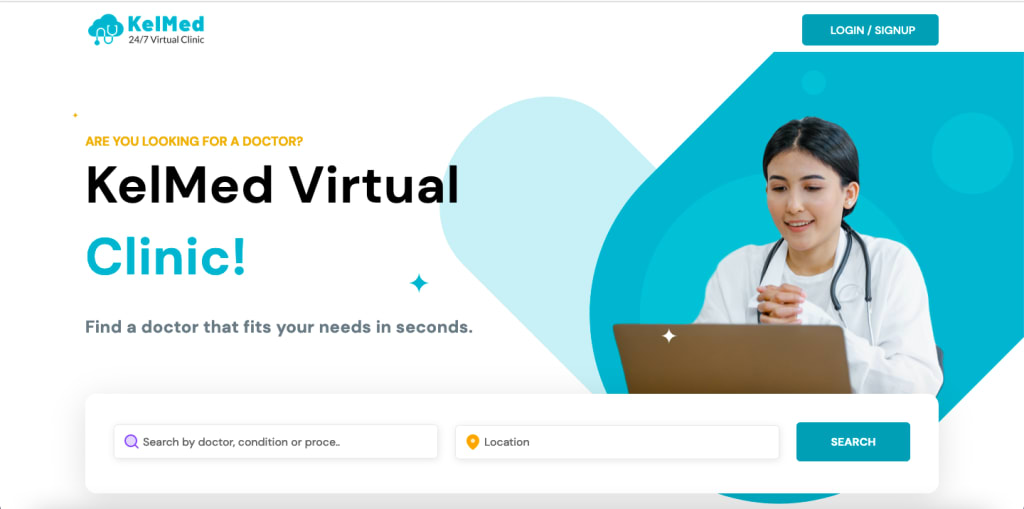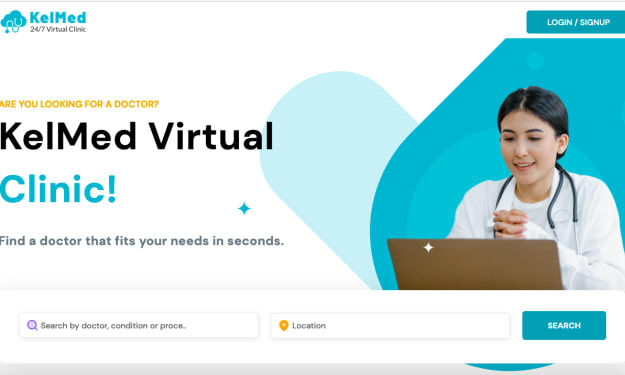The Emergence of Virtual Clinics: Transforming Healthcare Delivery
Kelmed Clinic

Introduction
The healthcare landscape is undergoing a significant transformation due to the rapid advancements in technology. One of the most significant changes is the emergence of virtual clinics, which are revolutionizing the way patients access healthcare services. Virtual clinics are online platforms that allow patients to receive medical consultations, prescriptions, and follow-up care through video or audio calls, emails, or chat services. This blog post will delve into the concept of virtual clinics, their benefits, and how they are transforming the healthcare sector.
The Concept of Virtual Clinics
Virtual clinics, also known as tele medicine or tele health clinics, are a relatively new concept in the healthcare industry. They utilize digital technologies to connect healthcare providers with patients remotely. These clinics enable patients to access healthcare services at their convenience without having to visit a physical clinic or hospital. Patients can consult with doctors or specialists through video calls, audio calls, or chat services and receive prescriptions, referrals, and follow-up care.
The Benefits of Virtual Clinics
1. Improved Access to Healthcare Services One of the most significant advantages of virtual clinics is that they provide patients with easy access to healthcare services, especially those in rural or remote areas where medical facilities may be scarce. Patients no longer have to travel long distances to receive medical care, as they can consult with healthcare professionals from the comfort of their homes.
2. Convenience and Flexibility Virtual clinics offer patients the convenience of receiving medical care at their preferred time and location. They can schedule appointments during non-working hours or weekends, eliminating the need to take time off work or school. Moreover, patients can receive immediate medical attention during emergencies, as virtual clinics often provide 24/7 services.
3. Reduced Healthcare Costs Virtual clinics can significantly reduce healthcare costs for both patients and healthcare providers. Patients save on travel expenses and time, while healthcare providers can reduce overhead costs associated with maintaining a physical clinic. Additionally, virtual clinics can help prevent unnecessary hospital visits and admissions, further reducing healthcare costs.
4. Enhanced Patient Engagement Virtual clinics empower patients to take control of their health by providing them with easy access to healthcare services and information. Patients can monitor their health conditions, receive personalized care plans, and communicate with healthcare providers regularly. This increased engagement can lead to better health outcomes and improved patient satisfaction.
5. Improved Continuity of Care Virtual clinics enable healthcare providers to maintain a continuous relationship with their patients. They can monitor patients’ progress, make necessary adjustments to treatment plans, and provide timely follow-up care. This continuity of care can lead to better health outcomes and reduced hospital read missions.
How Virtual Clinics are Transforming Healthcare
1. Expanding Healthcare Access Virtual clinics are expanding healthcare access to under served populations, including those in rural areas and individuals with mobility issues. They are breaking down geographical barriers and providing patients with access to specialized care that may not be available in their local communities.
2. Encouraging Preventive Care Virtual clinics encourage preventive care by making it easier for patients to consult with healthcare providers and receive timely medical advice. Preventive care can help detect and treat health issues before they become more severe, reducing the risk of complications and long-term health problems.
3. Enhancing Collaboration Among Healthcare Providers Virtual clinics facilitate collaboration among healthcare providers by enabling them to share patient information, consult with specialists, and coordinate care plans. This enhanced collaboration can lead to improved health outcomes and more efficient healthcare delivery.
4. Integrating Technology into Healthcare Virtual clinics are promoting the integration of technology into healthcare by utilizing digital tools such as electronic health records, remote patient monitoring devices, and telehealth software. These technologies can help improve the quality of care and streamline healthcare processes.
Conclusion
In conclusion, virtual clinics are transforming the healthcare industry by providing patients with improved access to healthcare services, reducing healthcare costs, and enhancing patient engagement. They are also expanding healthcare access to under served populations, encouraging preventive care, and promoting collaboration among healthcare providers. As technology continues to advance, virtual clinics will likely play an increasingly important role in the future of healthcare delivery.
You can check for virtual health assistance here:
- KelMed Virtual Clinic | Urgent Medical Care Everywhere & Anytime
- kelmed | Book Doctors Online | Book Doctors Near You





Comments
Kelmed Clinic is not accepting comments at the moment
Want to show your support? Send them a one-off tip.